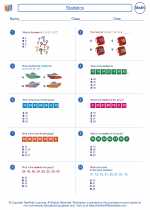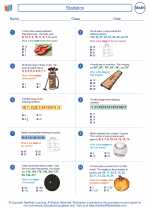Statistics -> simple random sampling
Simple Random Sampling
Simple random sampling is a method of selecting a sample from a population in which each member of the population has an equal chance of being chosen. It is a commonly used technique in statistics and research to gather data and make inferences about a larger population.
Key Concepts
Here are some key concepts to understand when it comes to simple random sampling:
- Population: The entire group that is the subject of the study.
- Sample: A subset of the population that is selected for the study.
- Random Selection: Each member of the population has an equal chance of being chosen for the sample.
- Sampling Frame: The list of all the individuals or items in the population from which the sample will be drawn.
Steps for Simple Random Sampling
There are several steps involved in conducting a simple random sample:
- Define the Population: Clearly define the population from which the sample will be drawn.
- Identify the Sampling Frame: Create a list or other method of identifying all the individuals or items in the population.
- Assign a Number to Each Member: Give each member of the population a unique number to facilitate random selection.
- Use a Random Number Generator: Use a random number generator or a randomization technique to select the sample.
- Draw the Sample: Select the sample based on the random numbers generated, ensuring that each member has an equal chance of being chosen.
Advantages and Disadvantages
There are both advantages and disadvantages to using simple random sampling:
Advantages:
- It is straightforward and easy to understand.
- It provides an unbiased representation of the population.
- It allows for generalization of results to the larger population.
Disadvantages:
- It can be impractical or costly when the population is large or dispersed.
- It may not represent certain subgroups within the population.
- It requires a complete and accurate sampling frame, which may not always be available.
Conclusion
Simple random sampling is a fundamental and widely used method for obtaining a representative sample from a population. By ensuring that each member of the population has an equal chance of being chosen, it helps to minimize bias and allow for valid inferences to be made about the larger group.
[Simple Random Sampling] Related Worksheets and Study Guides:
.◂Math Worksheets and Study Guides Sixth Grade. Statistics

 Worksheet/Answer key
Worksheet/Answer key
 Worksheet/Answer key
Worksheet/Answer key
 Worksheet/Answer key
Worksheet/Answer key
 Worksheet/Answer key
Worksheet/Answer key
 Worksheet/Answer key
Worksheet/Answer key
 Worksheet/Answer key
Worksheet/Answer key
